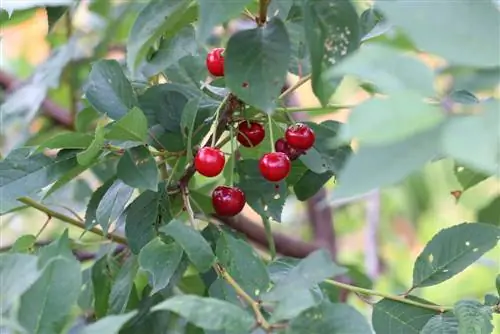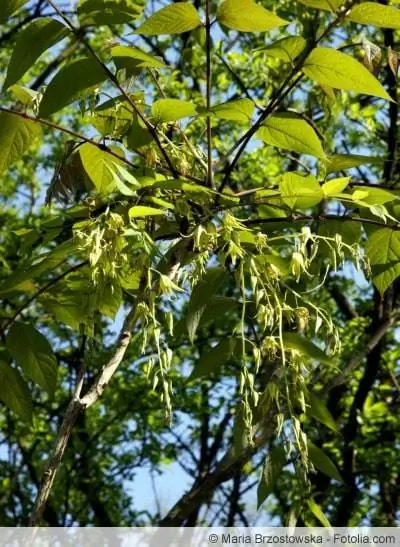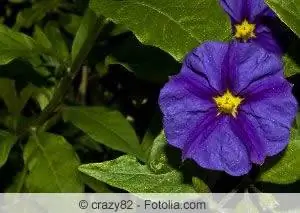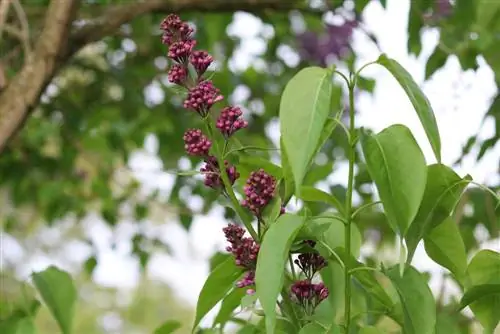- Author admin [email protected].
- Public 2023-12-17 03:39.
- Last modified 2025-06-01 06:48.
Most people have been familiar with the name of this mountain plant since the 1970s, when pop singer Heino reached the peak of his career with his hit “Blue Blooms the Gentian.” Despite its popularity, the gentian has become very rare and is now on the red list and protected.
Gentian originally occurs in cooler mountain regions. It actually prefers the higher areas around 1,000 to 3,000 meters. Nevertheless, over time the plant has found its way into home gardens and now thrives in front gardens or on balconies.
Gentian itself - whether it's a gentian bush or a gentian tree, it's very robust. The perennial plant is hardy and can be overwintered easily.
The blue gentian - the popular mountain plant

Gentians (Gentiana) are classified as part of the large gentian family. They are mainly found in mountainous regions and have various uses. Some gentians are used as medicinal plants and the gentian is often also used as an ornamental plant. There are not only blue plants, the flowers can also be yellow, pink or white.
Gentians - especially the blue gentian - are very popular among mountain flower lovers. One reason for this is the low level of care required for cultivation. In addition, overwintering the plant without damage does not require much effort. Below we explain some rules that guarantee the successful overwintering of the plant.
What happens in the coldest season?
A very important aspect of plant care is wintering. Although the gentian is a mountain plant and should be able to withstand snow and ice without major problems, it fears harsh winters and extreme cold and, above all, too much moisture. With the onset of autumn, the water problem becomes acute. Particular care should be taken to ensure that the gentian is in a location where water drains well. If the gentian stands in a puddle of water for too long, the plant, which is actually resistant to diseases, is quickly attacked by fungi and damaged.
The following tips will help you properly overwinter a gentian:
In regions with freezing temperatures, it is particularly recommended to cover the plant with mulch, brushwood or leaves to protect it from frost and cold. Even in winter, care must be taken to ensure that the gentian is watered abundantly. As already mentioned, the plants must never become too dry or too wet. The soil in which the gentian thrives must be permeable and nutrient-rich even in winter and have a high proportion of humus. Here are the three golden rules for correct wintering summarized in bullet points:
- uncomplicated wintering at moderate temperatures
- Attention: Protection from excessive frost by covering necessary
- moderate water release must also take place in the winter phase
What happens after successful wintering?
If plant owners decide that they want to grow gentian again next spring, they can fulfill this wish without much effort by sowing them again. It should be noted that sowing should take place before the first frost. The best time for this is between September and October. For germination, the temperature should ideally not exceed 5 degrees Celsius at any time. Gentian is known as a frost germinator and can thrive best under these conditions.

A simple planting tray can be used for sowing. New gentian can also be grown in the flower box. The soil should be permeable and have a high proportion of humus. In good weather conditions - i.e. sufficient light and sun - it can grow up to 10 cm tall. After the young plant has grown, it can simply be exposed. The flowers usually only appear in the coming spring. Incidentally, the young plant feels most comfortable in a rock garden - the plant's original origin.
What is the optimal thinning and care?
If the above requirements are met, a gentian no longer requires much care. The most important thing is the right location and protection from severe frost. The art of properly caring for a gentian involves, among other things, skillful watering. The roots of the plant must never dry out. At the same time, it is important that they do not become too moist. A right balance must be found.
If conditions are good, the gentian can quickly grow large and impressive. Then it is allowed to thin out the plant a little even during the flowering period, which creates a clearer line in growth. This has a particularly positive effect on the appearance of the mountain plant. If you regularly supply the gentian with a natural fertilizer, the care is optimal and the plant can survive the winter properly and then grow and thrive beautifully. Cow dung, which contains many important nutrients, is particularly suitable as a fertilizer.
Nowadays the wild gentian has become very rare and is already protected. Under no circumstances should it simply be dug up and then replanted in your own garden. Collecting gentian flowers is also prohibited. However, the gentian plant can be purchased at any well-stocked flower shop. In the past, the plant only grew in high mountain regions that were inaccessible to humans. But today you can enjoy these magnificent specimens year after year in your own garden or on your balcony - as long as you follow the guidelines for proper wintering.
What you should know about overwintering gentians in brief
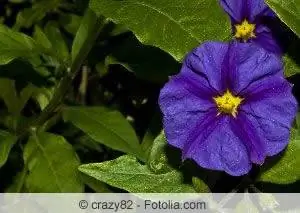
Because the plants prefer the coolness of the mountains, cooler winters don't bother them either. However, if you are unsure and don't want to take any risks, you can cover the gentian with some leaves or mulch. You can even water the gentian during the winter break. However, make sure that you only water on frost-free days and that the plants do not dry out.
Gentian alternatively overwintering
- You can also overwinter the gentian in a cool room at around 12 °C.
- However, make sure that you water it regularly and that it is not too dark, otherwise it may lose its foliage.
- The gentian also needs a lot longer until it starts to bloom again.
Grow new gentian
- Gentian is also ideal for sowing. You shouldn't miss the time here, because it would be ideal if you put the seeds in the ground before frost.
- Play it safe and use a planting tray for sowing, as you can move this into a winter home if necessary.
- You can transplant the young plants into the rock garden next year. You can actually spend the winter there.
If you want to cultivate gentian in a flower box, you need humus-rich soil, lots of light and sun. Be sure to avoid waterlogging. Then you can usually expect flowering plants in spring.



